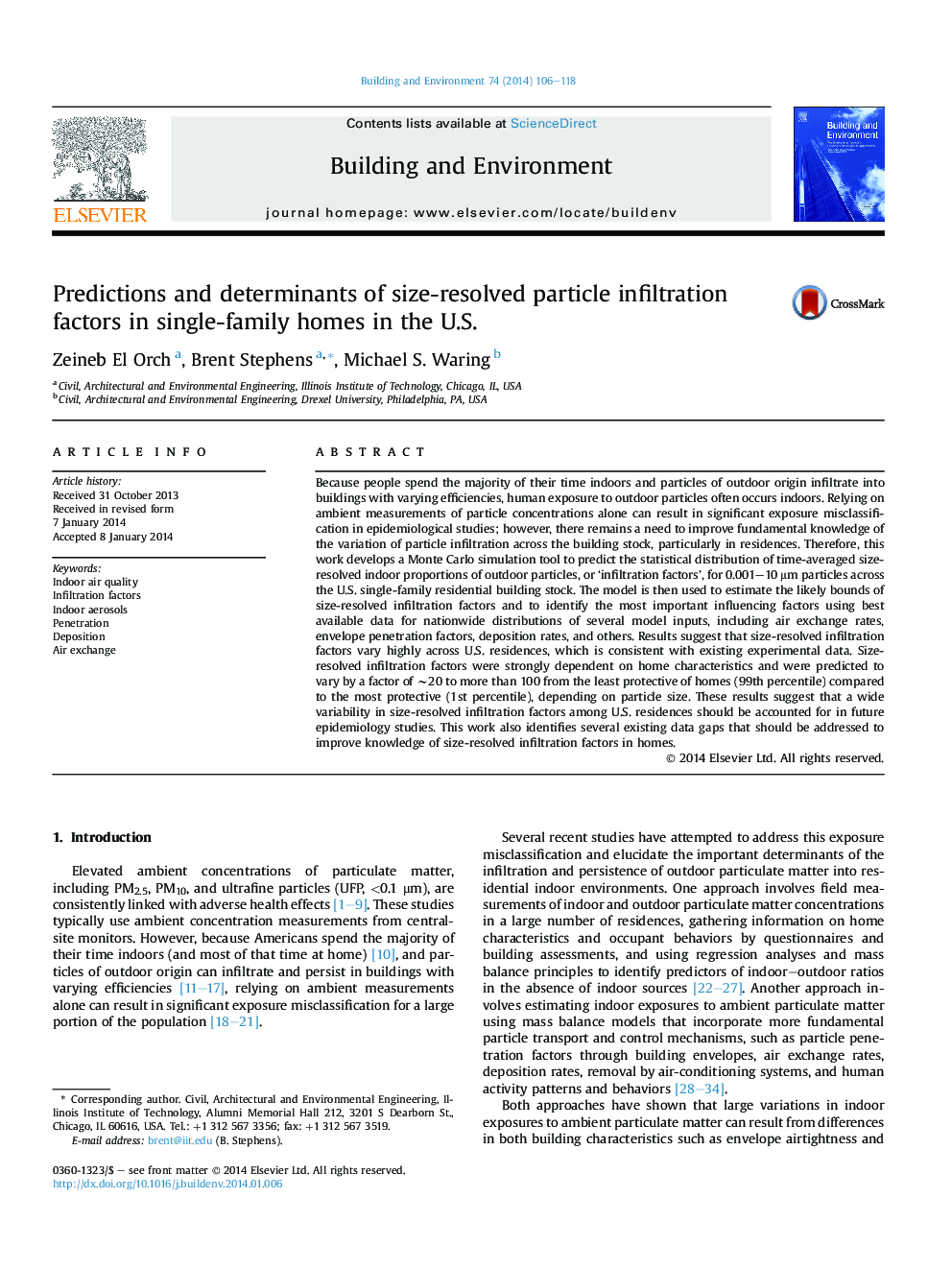| Article ID | Journal | Published Year | Pages | File Type |
|---|---|---|---|---|
| 248159 | Building and Environment | 2014 | 13 Pages |
•We develop a model for predicting size-resolved particle infiltration in U.S. homes.•We perform Monte Carlo simulations to predict particle infiltration factors in 100,000 homes.•Size-resolved particle infiltration factors varied widely across the U.S. building stock.•We identify several important determinants of particle infiltration factors.•We identify several existing data gaps for key determinants of particle infiltration factors.
Because people spend the majority of their time indoors and particles of outdoor origin infiltrate into buildings with varying efficiencies, human exposure to outdoor particles often occurs indoors. Relying on ambient measurements of particle concentrations alone can result in significant exposure misclassification in epidemiological studies; however, there remains a need to improve fundamental knowledge of the variation of particle infiltration across the building stock, particularly in residences. Therefore, this work develops a Monte Carlo simulation tool to predict the statistical distribution of time-averaged size-resolved indoor proportions of outdoor particles, or ‘infiltration factors’, for 0.001–10 μm particles across the U.S. single-family residential building stock. The model is then used to estimate the likely bounds of size-resolved infiltration factors and to identify the most important influencing factors using best available data for nationwide distributions of several model inputs, including air exchange rates, envelope penetration factors, deposition rates, and others. Results suggest that size-resolved infiltration factors vary highly across U.S. residences, which is consistent with existing experimental data. Size-resolved infiltration factors were strongly dependent on home characteristics and were predicted to vary by a factor of ∼20 to more than 100 from the least protective of homes (99th percentile) compared to the most protective (1st percentile), depending on particle size. These results suggest that a wide variability in size-resolved infiltration factors among U.S. residences should be accounted for in future epidemiology studies. This work also identifies several existing data gaps that should be addressed to improve knowledge of size-resolved infiltration factors in homes.
